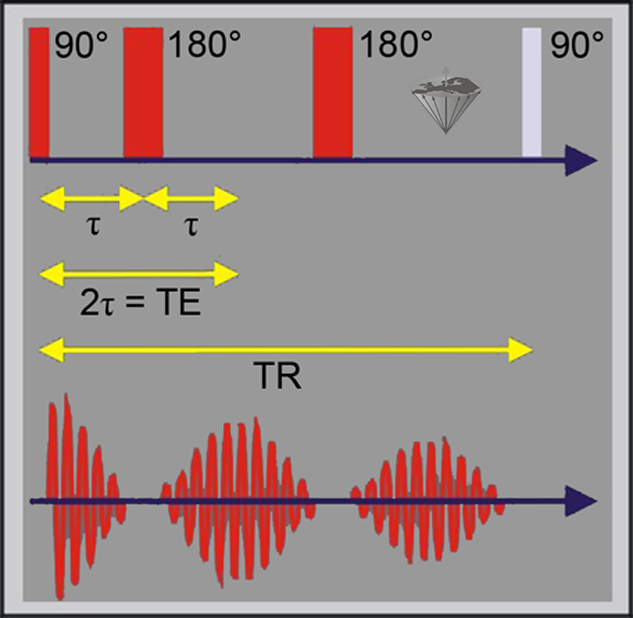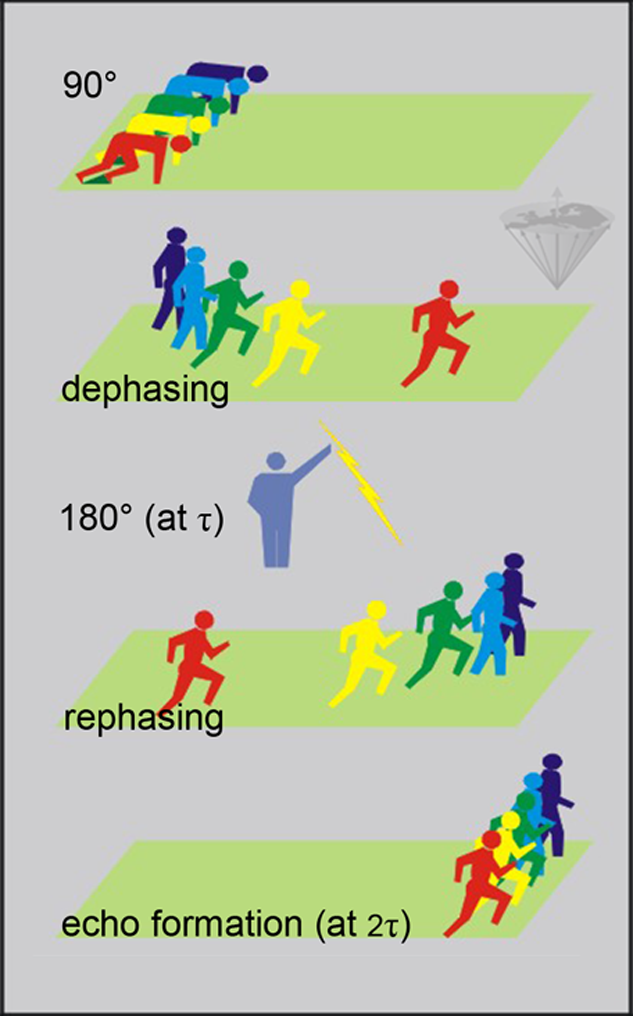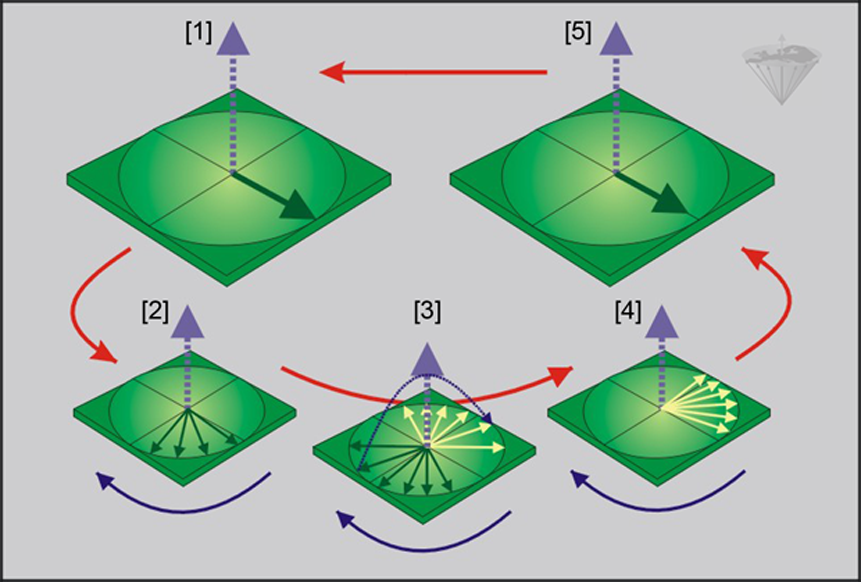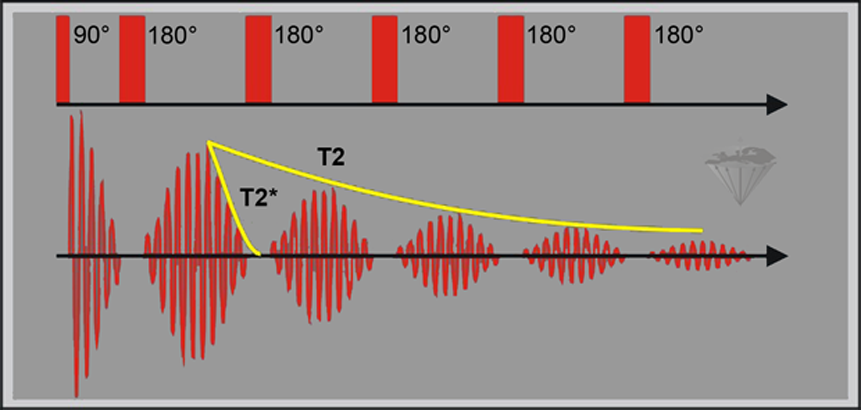





 o recapitulate: the T2 relaxation time is the the characteristic time constant for loss of phase coherence. The x-y magnetization will decay so that it loses 69% of its initial value in a time T2.
o recapitulate: the T2 relaxation time is the the characteristic time constant for loss of phase coherence. The x-y magnetization will decay so that it loses 69% of its initial value in a time T2.
To measure this time, one specific radio frequency pulse sequence is preferred: the spin-echo (SE) pulse sequence.
Let's look at this sequence first by comparing it with an example from everyday life — a race: After the spin system (e.g., the protons in a human body) has been excited by a 90° pulse, the spins dephase in the x'-y' plane. They separate from each other and fan out, some moving faster, others moving slower. If, after a time delay τ, the system is exposed to a 180° pulse, a refocusing is initialized. Now the faster spins lie behind the slower ones, but they catch up, which leads to an echo at time TE = 2τ.
At the time of the 90° pulse, all runners are lined up at the starting line. After the 90° pulse, the faster runners separate from the slower runners (dephasing). At a certain time during the race, the runners are transposed (at the time τ when the 180° pulse is transmitted). Now the faster runners are behind the slower ones, but they catch up.
All reach the finishing line together (i.e., create an echo at the echo time 2τ = TE) (Figures 04-17 and 04-18).

Figure 04-17:
Spin-echo pulse sequence. The spin system is excited by a 90° pulse. After a time delay (τ), one or several 180° pulses follow. This leads to the formation of an echo. The time between the 90° pulse and the peak of the echo is the echo time TE (= 2τ). TR is the repetition time between two complete pulse sequences.

Figure 04-18:
Spin-echo pulse sequence: The race example.
The 180° pulse changes the phase of each spin by 180°; that is, it reverses its phase. The position of the spins has not changed, so they will continue to rotate in the same direction. However, the 180° pulse causes the spins to return towards their starting point (alignment), rather than rotating further away from it as shown in Figure 04-19.

Figure 04-19:
After the system has been excited by a 90° pulse [1], the spins dephase [2]; the system is exposed to a 180° pulse, the spins are refocused [3]. Now the faster spins are behind the slower ones [4], but they catch up with them, and create an echo at TE [5]. Because there is a certain loss, the echo is smaller than the original signal.
If several 180° pulses are transmitted, echoes of decreasing amplitude are created. This is described as a multiple spin-echo or multi-echo sequence (Figure 04-20), commonly dubbed after its inventors the Carr-Purcell spin echo sequence [⇒ Carr HY 1954], later modified as the Carr-Purcell-Meiboom-Gill (CPMG) sequence [⇒ Meiboom 1958].

Figure 04-20:
The value of T2* can be obtained from the FID of single echoes while T2 is calculated from the peaks of the echo amplitudes. Several 180° pulses create echoes of decreasing amplitude (multiecho sequence). The envelope curve drawn through their peaks is the T2 decay curve.
T2 is reflected by the envelope of the peaks of the echoes. At the center of the echo, the effects of inhomogeneities are cancelled out. Since the maximum amplitude of the echoes is not dependent on inhomogeneities and static gradients, echo amplitudes truly mirror the spin-spin relaxation of the sample. Flow or diffusion irreversibly bring the spins from one location to another, and so lead to an attenuation of the echo.
The decay after the 90° pulse and on either side of the center of the spin echo is governed by T2* rather than T2. Therefore, the signal decays rapidly away from the echo center.
At ultrahigh fields (3 Tesla and higher), one observes a substantial field-dependent reduction in apparent T2 values caused by dynamic dephasing effects.